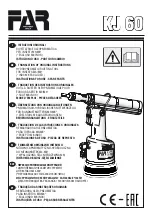
FlightSafety Canada
L t é e
L t d .
CL-600-2B16 PILOT TRAINING MANUAL
CL 601-3A/R
15-3
FOR TRAINING PURPOSES ONLY
PRIMARY FLIGHT
CONTROLS
GENERAL
Each aileron and each elevator is actuated by
two PCU’s, each powered by a separate hy-
draulic system. The rudder is actuated by three
PCU’s, each powered by a separate hydraulic
system. All PCU’s are independent of each
other, and there is no interchange of fluid be-
tween the hydraulic systems. Each PCU in-
corporates a control valve operated through
mechanical linkage (push-pull rods, cables,
and quadrants) from the cockpit. The valve
controls the hydraulic actuation of the PCU.
The control columns normally move as one unit
They can be mechanically disconnected from
each other by the pilot in the event jamming
occurs in an elevator mechanical control link-
age. The control wheels can also be discon-
nected from each other if an aileron mechanical
control linkage jams. Linkage is such that, if
a disconnect is made, the pilot has control of
the left surface (aileron or elevator) and the
copilot controls the right surface. Jamming
in the rudder control system is relieved by
breakout mechanisms that allow both the pilot
and the copilot to retain control of the rudder.
Proximity sensors in the aileron and rudder
PCU’s detect jammed control valves or loss of
hydraulic pressure. Elevator PCU sensors de-
tect jammed control valves only. In the event
of a control valve jam or loss of hydraulic
pressure to a PCU, the flight surface remains
operative through the other PCU’s.
Since hydraulically powered surfaces do not
provide control feel to the pilot, artificial feel
units are installed in the mechanical system
linkages to simulate aerodynamic forces and
provide a means of sensing control loads under
varying flight conditions.
On the ground, protection from wind gust
damage is provided by the associated PCU.
With no hydraulic pressure available, restricted
flow within the actuator provides slow, con-
trolled movement of the surface.
ROLL CONTROL SYSTEM
General
Roll control is maintained with hydraulically
powered ailerons, mechanically controlled by
either control wheel. Aileron travel is limited
by PCU travel and mechanical stops on the
control wheels. A damper on each aileron pre-
vents surface flutter.
Loss of one of the hydraulic systems pow-
ering the aileron PCU’s will not degrade
control authority.
DISCONNECT
MECHANISM
TO LEFT
AILERON
PCU'S
TO RIGHT
AILERON
PCU'S
Figure 15-2. Roll Disconnect
















































